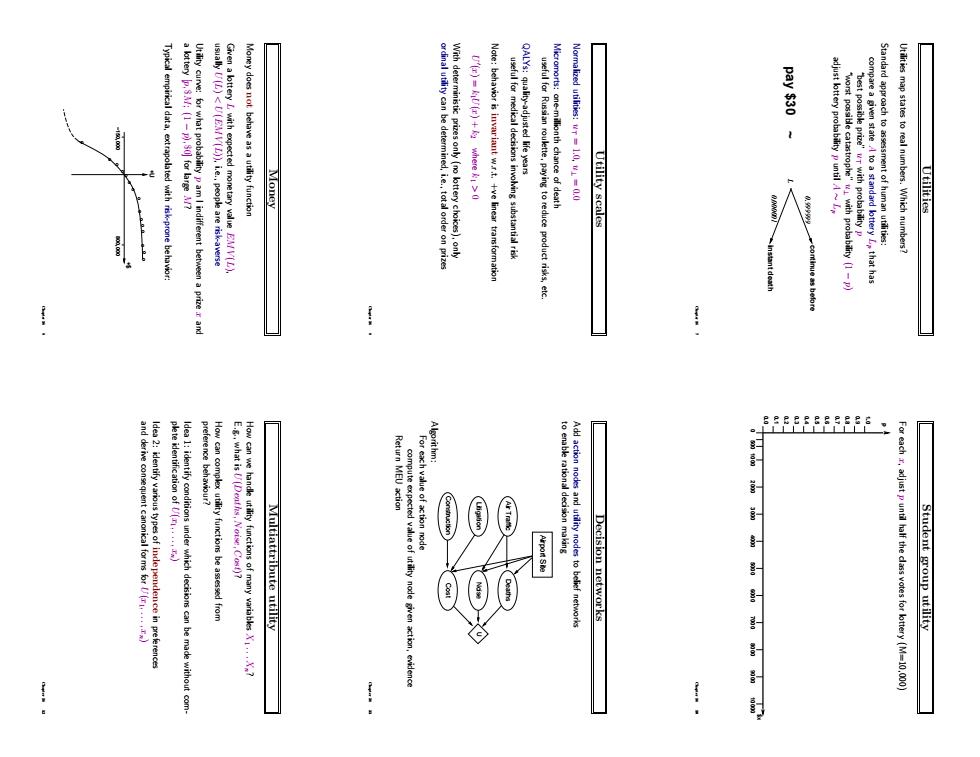正在加载图片...

Typical empirical data,extrapolated with risk-prone behavio Money does not behave as a utility function pay $30 Money Utility scales e prize T with pro Standard approach to assessment of human utilities: Utilities map states to real numbers.Which numbers? Multiattribute utility 8294:998 Decision networks ach,adjust puntil half the dass votes for kttery (M=10.000) Student group utility Utilities Utilities map states to real numbers. Which numbers? Standard approach to assessment of human utilities: compare a given state A to a standard lottery Lp that has “best possible prize” u> with probability p “worst possible catastrophe” u⊥ with probability (1 − p) adjust lottery probability p until A ∼ Lp L 0.000001 0.999999 instant death continue as before pay $30 ~ Chapter 16 7 Utility scales Normalized utilities: u> = 1.0, u⊥ = 0.0 Micromorts: one-millionth chance of death useful for Russian roulette, paying to reduce product risks, etc. QALYs: quality-adjusted life years useful for medical decisions involving substantial risk Note: behavior is invariant w.r.t. +ve linear transformation U 0 (x) = k1U(x) + k2 where k1 > 0 With deterministic prizes only (no lottery choices), only ordinal utility can be determined, i.e., total order on prizes Chapter 16 8 Money Money does not behave as a utility function Given a lottery L with expected monetary value EMV (L), usually U(L) < U(EMV (L)), i.e., people are risk-averse Utility curve: for what probability p am I indifferent between a prize x and a lottery [p, $M; (1 − p), $0] for large M? Typical empirical data, extrapolated with risk-prone behavior: +U +$ −150,000 800,000 o o o o o o o o o o o o o o o Chapter 16 9 Student group utility For each x, adjust p until half the class votes for lottery (M=10,000) p $x 0.0 0.1 0.2 0.3 0.4 0.5 0.6 0.7 0.8 0.9 1.0 0 500 3000 4000 5000 6000 7000 8000 9000 10000 1000 2000 Chapter 16 10 Decision networks Add action nodes and utility nodes to belief networks to enable rational decision making U Airport Site Noise Deaths Cost Litigation Construction Air Traffic Algorithm: For each value of action node compute expected value of utility node given action, evidence Return MEU action Chapter 16 11 Multiattribute utility How can we handle utility functions of many variables X1 . . . Xn? E.g., what is U(Deaths, Noise, Cost)? How can complex utility functions be assessed from preference behaviour? Idea 1: identify conditions under which decisions can be made without complete identification of U(x1, . . . , xn) Idea 2: identify various types of independence in preferences and derive consequent canonical forms for U(x1, . . . , xn) Chapter 16 12